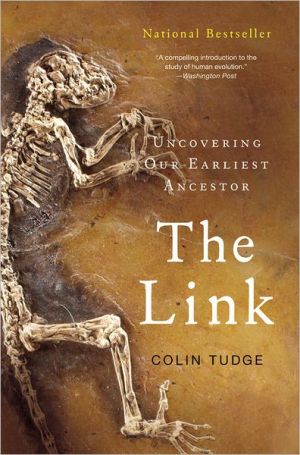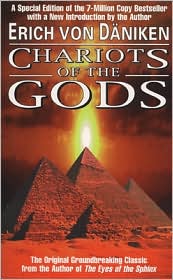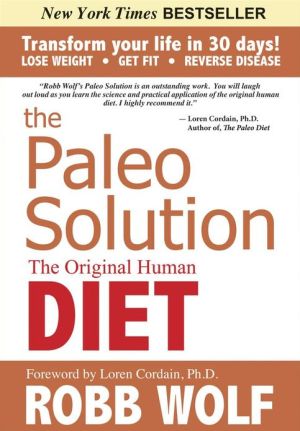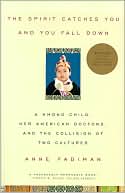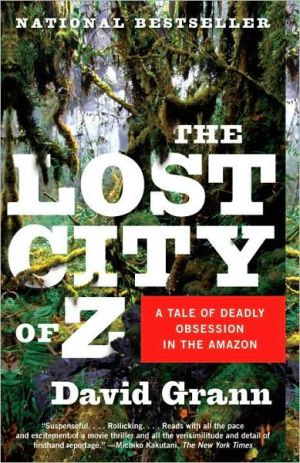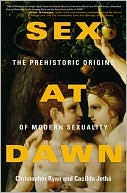The Link: Uncovering Our Earliest Ancestor
For more than a century, scientists have raced to unravel the human family tree and have grappled with its complications. Now, with an astonishing new discovery, everything we thought we knew about primate origins could change. Lying inside a high-security vault, deep within the heart of one of the world's leading natural history museums, is the scientific find of a lifetime - a perfectly fossilized early primate, older than the previously most famous primate fossil, Lucy, by forty-four...
Search in google:
For more than a century, scientists have raced to unravel the human family tree and have grappled with its complications. Now, with an astonishing new discovery, everything we thought we knew about primate origins could change. Lying inside a high-security vault, deep within the heart of one of the world's leading natural history museums, is the scientific find of a lifetime - a perfectly fossilized early primate, older than the previously most famous primate fossil, Lucy, by forty-four million years.A secret until now, the fossil - "Ida" to theresearchers who have painstakingly verified her provenance - is the most complete primate fossil ever found. Forty-seven million years old, Ida rewrites what we've assumed about the earliest primate origins. Her completeness is unparalleled - so much of what we understand about evolution comes from partial fossils and even single bones, but Ida's fossilization offers much more than that, from a haunting "skin shadow" to her stomach contents. And, remarkably, knowledge of her discovery and existence almost never saw the light of day.With exclusive access to the first scientiststo study her, the award-winning science writer Colin Tudge tells the history of Ida and her place in the world. A magnificent, cutting-edge scientific detective story followed her discovery, and TheLink offers a wide-ranging investigation into Ida and our earliest origins. At the same time, it opens a stunningly evocative window into our past and changes what we know about primate evolution and, ultimately, our own. The Barnes & Noble Review Forty-seven million years ago, a young female primate, probably overcome by toxic gas, fell into a volcanic lake. Settling on the bottom, she was quickly covered with fine sediment, which over millennia became compressed into rock. On May 19, 2009, the primate, now a fossil bearing the scientific name Darwinius masillae, was revealed to the world at a press conference in New York City, complete with book and History Channel movie deals, its own web site, "Revealing the Link," and even the presence of Mayor Bloomberg to give an official air to the occasion. The fossil of Darwinius -- also named "Ida" after the discoverer's young daughter -- is a lovely thing, remarkable for its preservation. You can even discern traces of her fur and her last meal. It's the most complete primate fossil ever found. But the excitement was about more than the quality of the fossil: it was about Ida's status as a "missing link." And on this issue the press release -- and the six authors of the scientific paper describing Ida -- didn't pull any punches, touting Ida as the "missing link to all humans," the "eighth wonder of the world," the "Mona Lisa" of fossils, "the Holy Grail for paleontologists," and even "a revolutionary scientific find that will change everything." On May 20th, Ida received the ultimate 21st-century tribute: a one-day appearance as the logo of the Google home page.
\ Guy GugliottaIn short, The Link is so accessible as to seem simplistic -- but it works as a compelling introduction to the study of human evolution. It is about what paleontologists do and how they do it. So forget the hype; it stands on its own merit\ —The Washington Post\ \ \ The Barnes & Noble ReviewForty-seven million years ago, a young female primate, probably overcome by toxic gas, fell into a volcanic lake. Settling on the bottom, she was quickly covered with fine sediment, which over millennia became compressed into rock. On May 19, 2009, the primate, now a fossil bearing the scientific name Darwinius masillae, was revealed to the world at a press conference in New York City, complete with book and History Channel movie deals, its own web site, "Revealing the Link," and even the presence of Mayor Bloomberg to give an official air to the occasion. The fossil of Darwinius -- also named "Ida" after the discoverer's young daughter -- is a lovely thing, remarkable for its preservation. You can even discern traces of her fur and her last meal. It's the most complete primate fossil ever found. But the excitement was about more than the quality of the fossil: it was about Ida's status as a "missing link." And on this issue the press release -- and the six authors of the scientific paper describing Ida -- didn't pull any punches, touting Ida as the "missing link to all humans," the "eighth wonder of the world," the "Mona Lisa" of fossils, "the Holy Grail for paleontologists," and even "a revolutionary scientific find that will change everything." On May 20th, Ida received the ultimate 21st-century tribute: a one-day appearance as the logo of the Google home page. \ Never before has such hoopla attended a discovery about evolution, even the finding of important human fossils like the australopithecine Lucy. And the existence of The Link, a book about Darwinius by science writer Colin Tudge (several chapters were contributed by his colleague Josh Young), can be understood only as a component of Ida's press kit -- one of the tools in a concerted campaign to promote the fossil, thereby enriching its publicists and recouping the hundreds of thousands of dollars it cost the Oslo Museum to buy it from a private collector. Written in secret, and over a span of just a few months, The Link was rushed into print so that it would appear in bookstores only one day after the press conference and the published description of Ida. As a piece of propaganda, the book is successful, for it shares all the heavy breathing accompanying Ida's discovery, characterizing the scientists who described her as the "dream team" and repeating the encomiums about Ida as a wonder of the world, the missing link, and so on. But as a piece of popular science, The Link is a dismal failure. Hamstrung by an agreement that Ida be kept secret from both the public and other scientists until her grand unveiling, Tudge was barred from seeking scientific input on the fossil's importance. This is a serious problem, for Ida now appears to be far less significant than Tudge and the "dream team" maintain.\ Before we get to the science, I should emphasize that The Link is not a complete washout. The photographs of Ida are superb, and, since she was collected illegally and sold privately, Tudge introduces us to the fascinating and shadowy trade in illicit fossils. And there are some things to be learned. If you don't know what a primate is, or which evolutionary forces may have propelled our evolution, Tudge will fill you in. But because this book was written in haste, the discussions are sketchy, and this ground has been covered better elsewhere (Richard Dawkins's Ancestor's Tale, for instance).\ Despite The Link's title, the scientific description and analysis of Ida occupies a scant 20 pages of a 250-page narrative. The rest is mostly padding. Tudge's attempt to fill an entire book with a chapter's worth of material sometimes reaches almost ludicrous lengths. For example, he lists in tedious detail the many other fossils found at Ida's collection site, mentioning not only what is there but what isn't. In one place he decorously informs us, "So far, Messel has yielded no ducks." But in case any readers have missed this ducklessness, Tudge tells us two pages later, "As already noted, there are no ducks." Another annoying filler is the repeated appearance of homilies drawn from the fossils. Within a stretch of just two pages, for example, we learn that "Nature never ceases to surprise," "Nature is endlessly inventive, but it endlessly reinvents itself nonetheless," and "Nature is never simple." Tudge never ceases to embroider.\ But the overarching problem -- one shared by this book, the scientists who described Ida, and the publicists who flogged her -- is that "the link" doesn't seem to be a link at all. So what is a "link," and why is Ida not one? To scientists, a true link between, say, humans and our closest living relatives, chimps, would be the single ancestral species that split into two lineages, one ultimately giving rise to living chimpanzees and the other to modern humans. Yet the paleontological record is spotty -- less than 1 percent of all the species that ever lived are known to us as fossils -- so we can't expect to find the remains of that single ancestral species. Fortunately, we don't need this one "link" to confirm the common ancestry of its descendants. Instead, we can look for transitional species -- fossils related to a common ancestor but probably not that ancestor itself. In the case of humans and apes, this would be a fossil having some traits of primitive apes and others that are seen in later humans. We have many such fossils. For example, Lucy, the 4 million-year-old specimen of Australopithecus afarensis, may not be on the line to modern humans, but her combination of a humanlike body with an apelike skull, and her dating to shortly after our own lineage diverged from that of chimps, clearly documents the rise of the human lineage from a primitive ape.\ Since there are already many "missing" links between ourselves and our closest relatives, what could Ida link us to? According to the "dream team," the fossil may represent a previously missing link between the two major branches of living primates: the anthropoids (apes and monkeys) on one hand and the lemurs and lorises on the other. But this suggestion is almost certainly wrong. In their rush to bring Ida to public attention, her discoverers performed a cursory and incomplete analysis of the fossil, completely neglecting to compare it to other fossil primates. The scientific consensus of the last few months places Ida in a group of primates called adapiforms, which occupy an early segment of lemur/loris branch of the primate family tree. The adapids, which are already well represented by fossils, became extinct without leaving modern descendants. Ida, beautiful though she is, doesn't tell us much more than we knew already, and since she appears to be more closely related to lemurs than to humans, she doesn't link us to anything.\ Tudge, then, is simply off the mark when suggesting that "Ida seems to represent the first stirrings of the anthropoids" and goes even further wrong in claiming that she will "rewrite history." At the book's close, perhaps sensing that Ida might actually be something less than the Mona Lisa of fossils, Tudge pulls back a bit, praising the fossil's condition and drawing more nebulous conclusions. He suggests, for instance, that by recognizing Ida as kin, we will be imbued with the oneness of nature and thereby cease our wholesale destruction of the biosphere. But if a transitional fossil like Lucy didn't do that, why should Ida?\ While some science education is better than none, I can't recommend The Link, for any genuine learning it imparts is more than offset by its misleading message that Ida is the missing link between humans and other primates, and by the book's implicit acceptance of hype and overblown claims as a legitimate part of science. The Link fails the very first requirement of science journalism: the need to go beyond the claims of enthusiasts and look at the evidence objectively. But of course Tudge couldn't -- he was muzzled by the "dream team" and the television producers.\ The buzz around Ida may in fact mark a watershed moment in science reporting: the merging of science journalism and tabloid journalism. On the whole, there isn't much difference between Ida's press releases and the National Enquirer, with Ida playing the role of Paris Hilton: an attractive specimen that adds little to our culture. To a scientist, statements like this -- made by one of Ida's discoverers -- grate like fingernails on a blackboard: "When we publish our results it will be like an asteroid hitting the Earth." But in the end, it's not so much the hype and the absence of scientific gravitas around Ida that bothers me, it's the irresponsibility of trying to gull the public into accepting a scientific conclusion that wasn't properly vetted by scientists. This end run around the scientific community is the kind of thing that creationists do. Fortunately, real science has won out -- for now. When Chris Beard, a paleontologist at the Carnegie Museum of Natural History, was asked to assess Ida, he remarked dryly, "This fossil has been hailed as the eighth wonder of the world. Frankly, I've got ten more in my basement." --Jerry A. Coyne\ Jerry A. Coyne is the author of Why Evolution Is True. He has been a professor at the University of Chicago in the Department of Ecology and Evolution for 20 years. He specializes in evolutionary genetics and works predominantly on the origin of new species. He is a regular contributor to The New Republic, the Times Literary Supplement, and other publications.\ \ \
